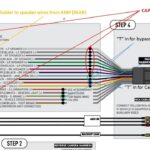The OBD-II code P0108 indicates a problem with the Manifold Absolute Pressure (MAP) sensor circuit. Specifically, it means the Powertrain Control Module (PCM) is detecting an excessively high voltage input from the MAP sensor. This article will delve into the causes, symptoms, diagnosis, and potential fixes for the P0108 code.
The MAP sensor plays a crucial role in engine performance by measuring the air pressure inside the intake manifold. The PCM uses this data to calculate the air density and adjust the air-fuel mixture, ignition timing, and other engine parameters for optimal performance and fuel efficiency. A faulty MAP sensor or circuit can significantly impact engine operation.
Understanding the P0108 Code: Symptoms and Causes
When the P0108 code is triggered, the Check Engine Light will illuminate on the dashboard. Other noticeable symptoms may include:
- Hard starting: The engine may crank for an extended period before starting.
- Poor fuel economy: You might notice a decrease in miles per gallon.
- Rough engine idle: The engine may run unevenly or stall at idle.
- Reduced engine power: The vehicle may lack acceleration power or feel sluggish.
Several underlying issues can trigger the P0108 code:
- Faulty MAP Sensor: The most common cause is a malfunctioning MAP sensor itself, requiring replacement.
- Vacuum Leaks: Leaks in the intake manifold or vacuum hoses can disrupt pressure readings, causing the P0108 code.
- Wiring Issues: Damaged, corroded, or loose wiring in the MAP sensor circuit can lead to voltage irregularities.
- PCM Problems: In rare cases, a faulty PCM might be the root cause, although this should be considered after exhausting other possibilities.
Diagnosing the P0108 Code: A Step-by-Step Guide
Diagnosing the P0108 code involves a systematic approach:
-
Retrieve Freeze Frame Data: Use an OBD-II scanner to capture the freeze frame data, which provides a snapshot of engine conditions when the code was triggered.
-
Visual Inspection: Inspect the MAP sensor, wiring harness, and vacuum hoses for any visible damage, loose connections, or leaks.
-
Voltage Test: With the key on and engine off (KOEO), check the voltage at the MAP sensor connector. A steady 5-volt reference and good ground are essential. The signal wire voltage should fluctuate with changes in engine vacuum. You can use a vacuum pump to test the sensor’s output voltage.
-
Vacuum Leak Test: Inspect for vacuum leaks using a smoke machine or by spraying carb cleaner around potential leak points. A change in engine RPM indicates a leak.
Fixing the P0108 Code: Common Solutions
Once the cause is identified, implementing the appropriate solution is crucial:
-
Replace the MAP Sensor: If the sensor is faulty, replacement is the most common fix.
-
Repair Vacuum Leaks: Seal any identified leaks in the intake manifold or vacuum hoses.
-
Repair or Replace Wiring: Address any damaged, corroded, or loose wiring in the MAP sensor circuit.
Preventing Future P0108 Codes
Regular maintenance can help prevent the P0108 code from recurring:
-
Routine Inspections: Periodically inspect vacuum hoses and wiring for signs of wear and tear.
-
Keep the Engine Clean: A clean engine bay can help prevent corrosion and damage to sensors and wiring.
Conclusion: Addressing the P0108 Code for Optimal Engine Performance
The OBD2 code P0108 signals a potential problem within the Manifold Absolute Pressure sensor circuit. By understanding the symptoms, causes, and diagnostic procedures outlined in this article, you can effectively address the P0108 code and restore your vehicle’s performance and fuel efficiency. If you are uncomfortable performing these diagnostics yourself, consult a qualified mechanic. A properly functioning MAP sensor is vital for optimal engine operation.

